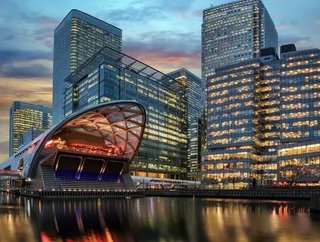Managing operational risks is key to improving sustainability

There is an increasing focus on incorporating resilience into new structures, as well as updating existing infrastructure. However, addressing sustainability requires vision and clear communication to ensure it gets the attention it deserves prior to and during delivery.
Increased public awareness of the impact of climate change and the UK Government’s recent decision to set a legally-binding target to reduce greenhouse gas emissions to net zero by 2050, are driving decision-makers in the construction sector and other industries to prioritise sustainability. In setting this new target to reduce carbon emissions, the UK is the first G7 nation to align with the Paris 2015 agreement, but others already have plans to follow.
To assist those responsible for the design and development of new buildings and infrastructure, the sustainability assessment methodology – BREEAM – has been rolled out to more than 70 countries around the world. Used to measure and certify the environmental performance of new and existing buildings, those with a rating of Excellent or Outstanding are deemed to be sustainable environments that meet a high standard in terms of their environmental, social and corporate governance (ESG) performance.
Certification schemes and benchmarks clearly have an important role to play in driving sustainability performance and their use is certainly helping to attract investors and other stakeholders, who increasingly expect projects to deliver measurable environmental or societal benefits. As a result, those responsible for designing new projects are specifying sustainable materials and operational equipment, usually justified by whole-life cost considerations, which prove their efficiency over time.
Operational risks are among the biggest risk factors for any major-scale infrastructure programme or construction project and successful mitigation starts at design stage, when sustainability is closely considered. At this stage, a complete cost plan for the project is prepared, incorporating both capital costs, which are associated with the build itself and operational costs, spanning the expected life of the structure. If capital expenditure is low at design stage, but operational costs, such as those incurred when using or maintaining the asset, seem excessive, there is an opportunity to address this by specifying a more sustainable solution.
SEE ALSO
Once building work gets underway, costs can start to increase and if not properly controlled, some of the sustainability benefits of the structure could be eroded. From the project manager’s perspective, if budgets are not being met, there could be pressure to cut corners and decisions might be taken to swap sustainable equipment, which comes with a higher price tag, for cheaper, less eco-friendly alternatives. While this could help to reduce capital expenditure, the longer-term impact of such decisions on the life-cycle performance of the building could be considerable, particularly if the replacement costs more to maintain.
Building in sustainability and forward planning at design stage can help to make projects more attractive to private sector investors and public sector sponsors. For this reason, many designers are focused on reducing both embodied and operational carbon emissions. This typically involves the specification of energy-efficient lighting or microgeneration technologies, such as solar panels or wind turbines. Such equipment may increase capital expenditure but has the potential to drastically reduce operational costs over time, making the building more efficient from a cost and environmental perspective. Increasingly designers are being challenged to future-proof structures to ensure their sustainability by allowing changes to extend their functionality or capacity further down the line, in lieu of significant refurbishment or rebuilding.
At any stage of delivery, if whole-life costs are not properly considered, the risks associated with the project can increase dramatically. An example of this can be seen in the award-winning Queen Elizabeth Olympic Park, which became home to West Ham Football Club in 2016. Forward-thinking designers and their sponsors were keen to develop a multi-storey asset which could bring diverse benefits to the local area for many years to come. Their decision to incorporate dual functionality by allowing the structure to double as an athletics track was inspired, but the operational costs attached to switching from one use to the other have since become a bone of contention.
To assist in de-risking construction projects and infrastructure programmes and deliver sustainability benefits, it is important that stakeholders at a senior level encourage adherence to the right processes and controls from the start. Once a project is underway, decisions made onsite must be communicated to all stakeholders and endorsed where necessary. As projects can often take many years to complete, these processes and controls must also be robust enough to stick even when there are significant changes of personnel or multiple specialist teams are involved.
Wider application of BIM or Building Information Modelling, which involves the creation of a detailed digital description of every aspect of a building or project, can also help to improve data management and visibility across the life of the project. The ability to integrate 3D models with time and cost data means risks can be identified more readily and used to inform decision making.
Keeping an eye on operational risks at all stages of delivery is vital to ensure that construction projects deliver on their sustainability promises.
Bill Zuurbier is co-Founder and Director of risk management consultancy Equib






